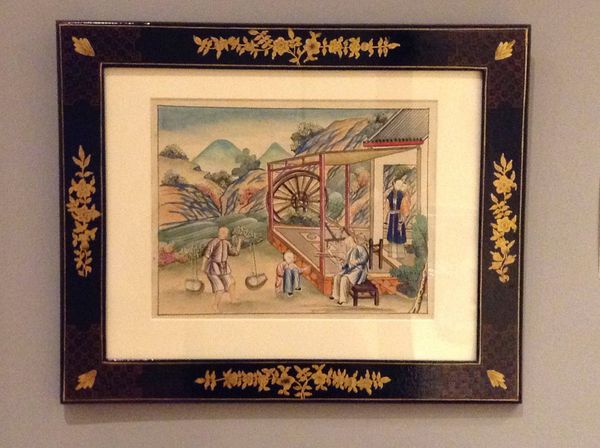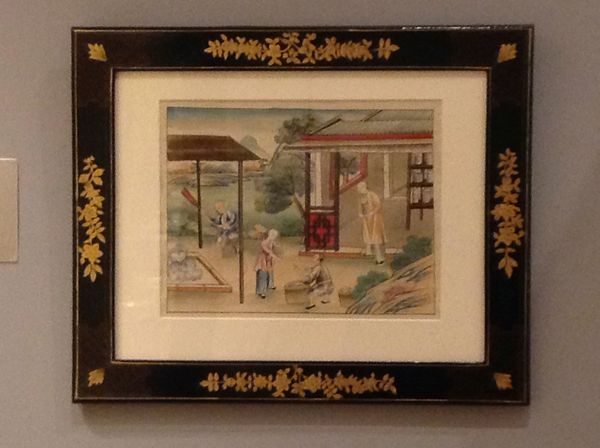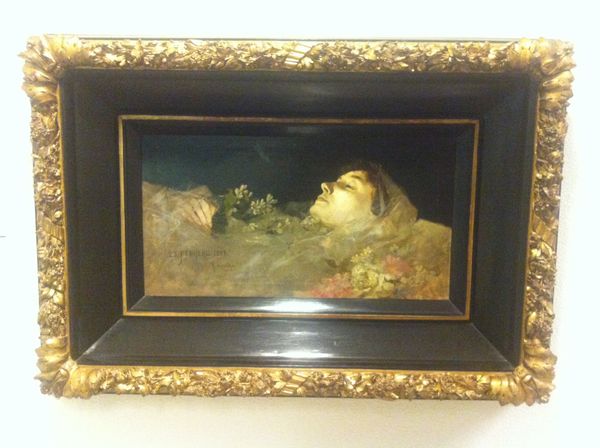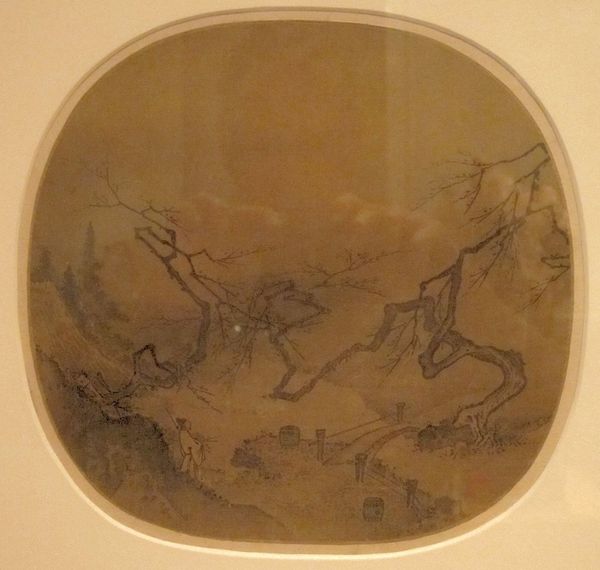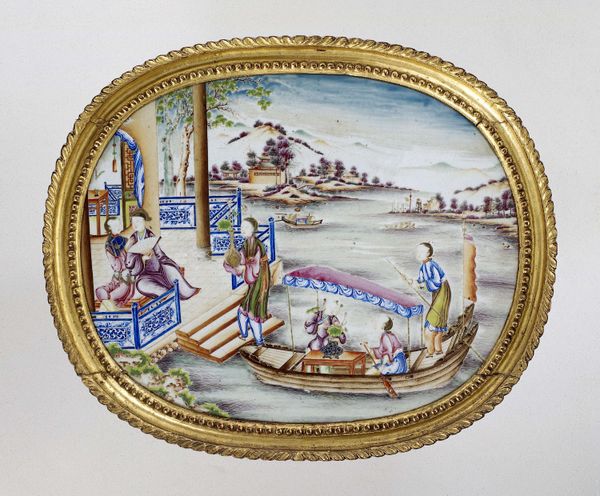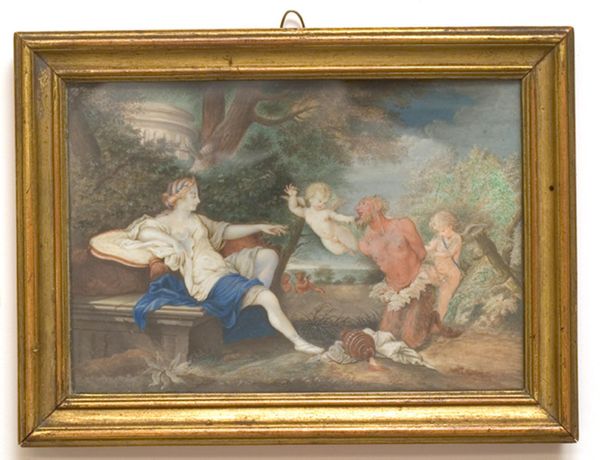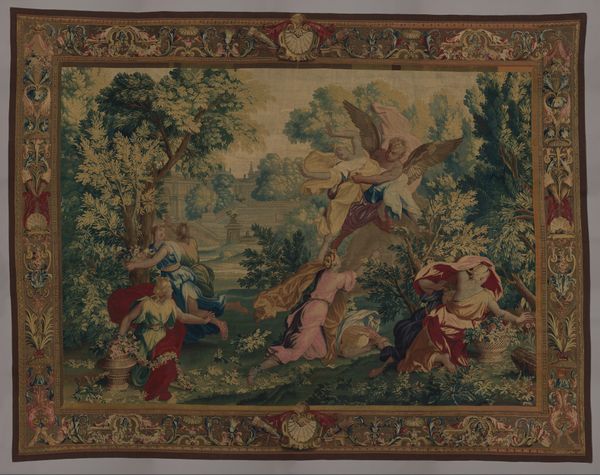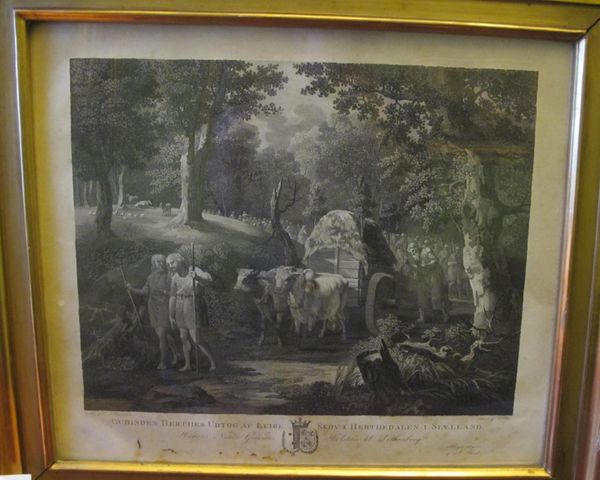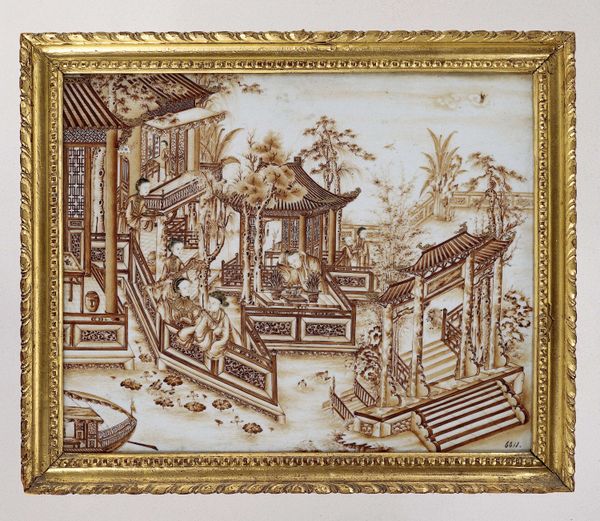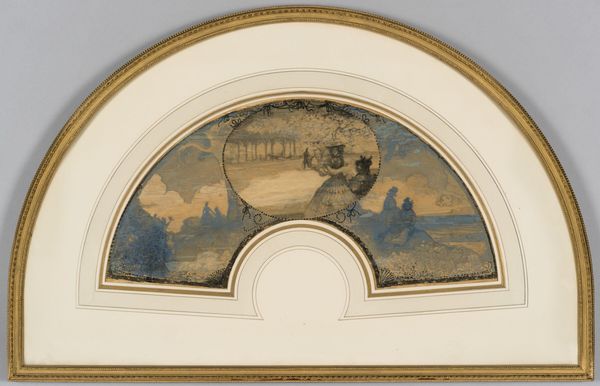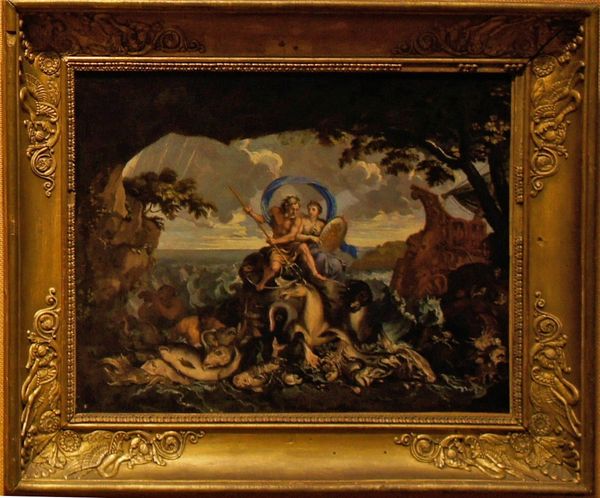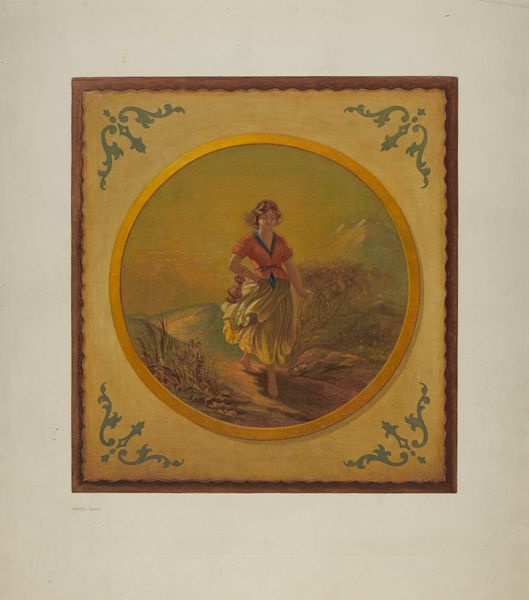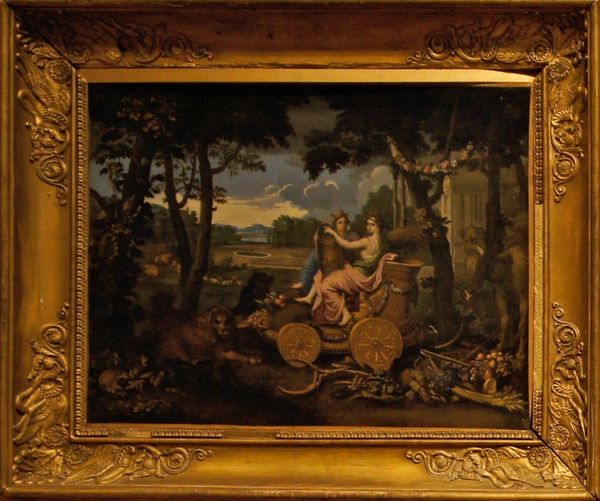
painting, watercolor
#
water colours
#
painting
#
asian-art
#
landscape
#
figuration
#
watercolor
#
orientalism
#
genre-painting
#
watercolor
Dimensions: 8 1/2 x 11 in. (21.59 x 27.94 cm) (sight)14 3/4 x 17 7/8 in. (37.47 x 45.4 cm) (outer frame)
Copyright: Public Domain
Curator: This watercolor painting, known as "Excavating the Clay," is an intriguing genre scene from the 19th century, location Minneapolis Institute of Art. Editor: It strikes me as quite dreamlike. The pastel hues lend it a delicate, almost ephemeral quality, but the detailed frame hints a deeper and more rich reading. Curator: Indeed, let's consider the artistic and economic context. The materials are humble—watercolor on what appears to be thin paper. This choice reflects both the accessibility and portability of the medium but also suggests a piece perhaps made for the tourist market and easily traded along international markets. The decorative elements in the frame remind of inlaid wooden cabinets typically made for export. Editor: The central figure working seems small, but vital, carrying the burdens across the water, in that light one is reminded of mythological carriers such as St. Christopher or, from Ancient Greece, Charon the ferryman to the underworld. In a larger cultural sense, we can also observe archetypal themes of labor, transformation, and perseverance in the details. Curator: The composition guides our reading: it contrasts with the serene landscape in the background, this small and fragile character represents hard labor, even toil. The fact it is a genre scene emphasizes how materials like clay depend on workers. It subtly highlights human influence. Editor: It reminds of stories of resilience. Those circular objects being moved, the distant mountain or the river are the types of symbol that has a strong connection to the human consciousness over a long period of time. There is perhaps even a hint that one is a giver to humanity—like the clay used to build. Curator: Perhaps. My view tends toward the specific labor involved, while you, of course, find resonance in broader symbols and themes. I find my insight broadened through conversation here. Editor: Yes. Thinking of the image as a microcosm and using both your perspective and my symbolic point of view is very rewarding to expand meaning here, beyond what appears initially.
Comments
No comments
Be the first to comment and join the conversation on the ultimate creative platform.
